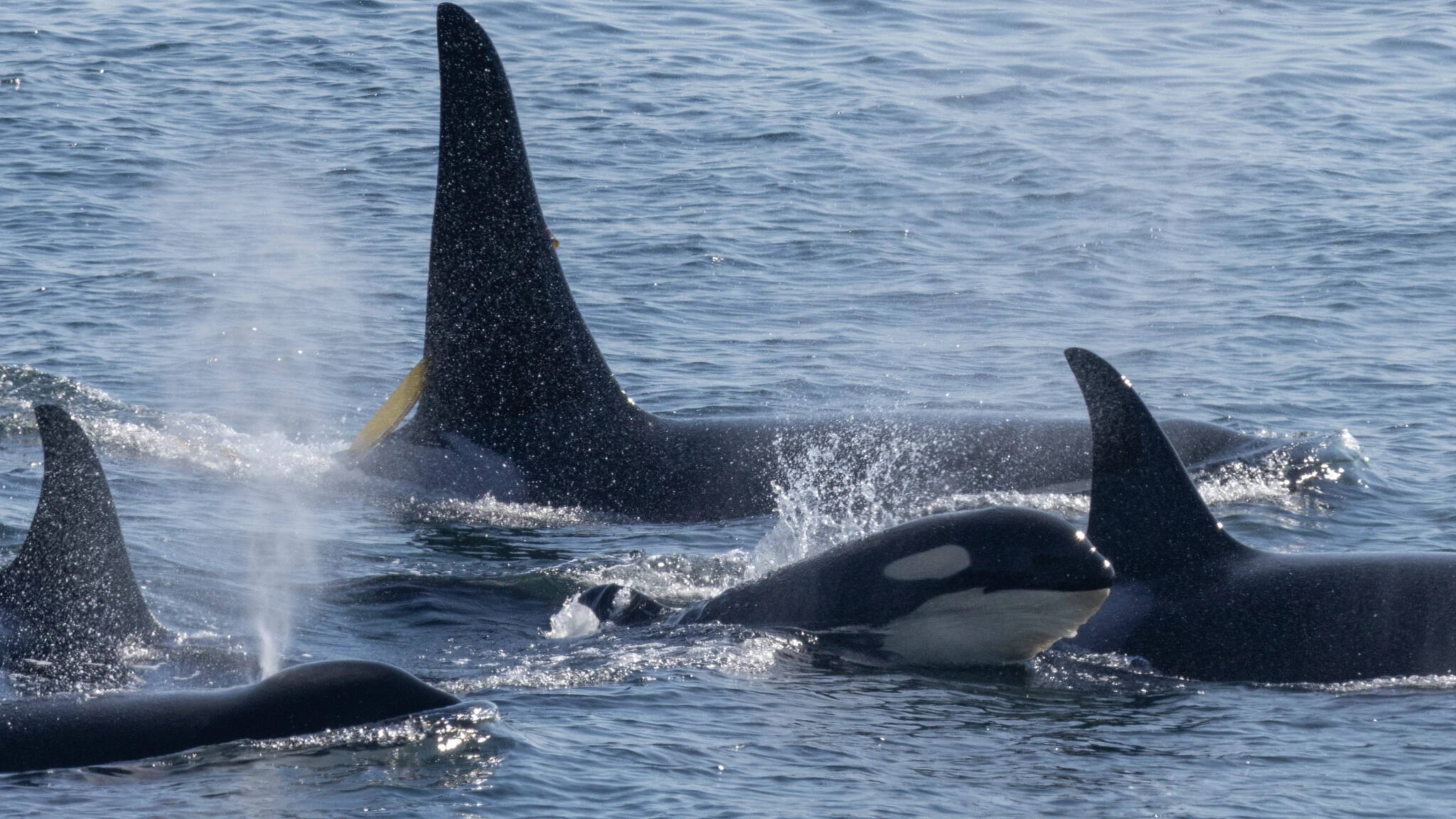Under a new law, Washington boaters must stay 1,000 yards away from southern resident killer whales (SRKW) at all times.
The law went into effect on Jan. 1, the same day that many islanders spotted J Pod member Tahlequah carrying her dead baby as the pod passed by Point Robinson on Vashon.
It was a heartbreaking repeat of Tahlequah’s display of grief in 2018, when she captured worldwide attention for carrying another dead calf for at least 17 days over 1,000 miles of water — and a reminder of what’s at stake for the highly intelligent animals which the new law seeks to protect.
Southern resident orcas use echolocation to hunt prey, and boat noise disorients them and impairs their hunting, according to the Washington Department of Fish and Wildlife (WDFW).
“To some degree, reducing noise by reducing vessel speed and keeping vessels farther from the whales is a dial we can turn to instantly make whatever amount of prey is there more available to the whales,” WDFW killer whale policy lead Dr. Julie Watson said. “They’re more likely to pursue prey and more successful at catching prey when noise is lower.”
The old law only required recreational vessels to stay 300 yards away from southern residents and at least 400 yards out of the path directly in front of and behind them.
There are around 50,000 killer whales globally, about 2,500 of which live in the eastern North Pacific Ocean, according to the National Oceanic and Atmospheric Administration (NOAA).
But the southern resident orcas, who frequent the waters of the Salish Sea from the late spring through fall, number only in the low seventies.
Scientists estimate the southern resident’s minimum historical population was about 140 animals, NOAA said, but live-capture in the 1960s for marine mammal parks, modern impacts on their prey base and opportunistic shooting cut their population down to just 71 whales by 1974.
Scientists have identified three major threats to their ability to feed, reproduce and survive: Vessel noise; toxic contamination, such as from insecticides and flame retardants; and malnutrition.
The SRKW population is split into three pods; the J pod, which visits the southern part of the Salish Sea including Vashon most often has 25 members.
Because of their small numbers, the deaths and births of individual orcas are often cause for grief or celebration.
A new calf, J61, born to J31 Tahlequah and spotted just around Christmastime, was confirmed dead only about a week later on Dec. 31. Tahlequah was seen carrying the dead calf for the first time on Jan. 1.
At the same time, researchers on New Year’s Eve also confirmed that a new calf had been born to J Pod, though its mother and its sex had not yet been confirmed.
Islander Orca Annie Stateler, an Indigenous marine naturalist and stranding responder who saw and identified orcas at Point Robinson on Jan. 1, said she witnessed that devastating sight of Tahlequah, once again, carrying a dead infant.
”I felt in my bones that she would not readily relinquish J61,” Stateler said in an email. “Past is prologue. Losing three SRKW babies in a row is beyond devastating.”
But Stateler also had good news to report: Though most of Tahlequah’s matriline have been deemed vulnerable and in poor body condition, she said, baby orca J62, so far, thankfully looks more robust.
And “we heard adorable above-water vocalization from a frisky group blowing bubbles that included the J14s and 2 1/2-year-old Sxwyeqólh (Swee-uh-kosh) J59,” she said.
The new distance law applies to operators of motorized vessels, non-motorized vessels and paddlecraft such as kayaks and paddleboards.
• All watercraft operators must stay 1,000 yards away from SRKW in all directions.
• If SRKW approach within 400 yards of the vessel, the boater must disengage their transmission, luff sails, or stop paddling (if it is safe to do so) until the animal moves away.
• Boaters who think they may be closer than 1,000 yards to SRKW, but not within 400 yards, should attempt to navigate out of the path and away from SRKW at a speed of 7 knots or less.
During the 2025 boating season, WDFW officers will focus on educating people about the new regulations, according to a press release, though citations will be issued in particular for egregious violations or repeat offenders, according to the department.
“Ideally, salmon recovery will lead to more fish available to the whales throughout their range, and we all need to keep [a] focused, sustained effort on protecting remaining salmon habitat and restoring critical habitat functions that support diverse salmon populations,” said Watson, the WDFW employee. “That’s the long game. In the short term, boaters helping turn down the noise by staying farther from the Southern Residents can help the whales find the food they need today.”
The new boating law is a step in the right direction, Stateler said, who added that greater interventions — including breaching the four lower Snake River Dams to improve salmon numbers — remain necessary. Individual whale watchers and fans should also consider their role, she said, such as by driving less (reducing their carbon footprints and contaminants released from car tires into the orca’s waterways).
Though the new rule applies to southern resident whales and not transient killer whales, it is difficult for the untrained eye to tell the species apart from a distance — so WDFW recommends boaters stay away from any unidentified killer whales.
WDFW plans to provide a public briefing on other proposed changes to commercial whale watching law on Jan. 10, which will include an opportunity for public commentary. According to a WDFW November report, that will include a recommendation to increase the agency’s funding and enforcement ability on the water.
For more information on the new law, visit bewhalewise.org.



